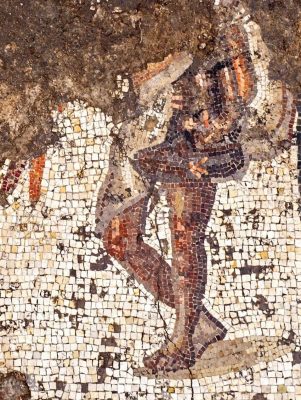×


We have detected your country as:
Please click here to go to the USA website or select another country from the dropdown list.
 A beautiful Roman mosaic from the 2nd–3rd centuries AD, bearing an inscription in ancient Greek, was uncovered at the Caesarea National Park. The excavations by the Israel Antiquities Authority [IAA] are part of reconstruction work on the impressive Crusaders-era entrance bridge to Caesarea.
A beautiful Roman mosaic from the 2nd–3rd centuries AD, bearing an inscription in ancient Greek, was uncovered at the Caesarea National Park. The excavations by the Israel Antiquities Authority [IAA] are part of reconstruction work on the impressive Crusaders-era entrance bridge to Caesarea.
The dig uncovered part of a large, opulent building dating back 1,500 years to the Byzantine period. Scholars believe the building was part of an agora—a large public area for commerce and socializing. To the archaeologists’ surprise, under the imposing Byzantine-era structure they found a spectacular mosaic from an even earlier building dating back about 1,800 years.
According to Dr. Peter Gendelman and Dr. Uzi ’Ad, directors of the excavation for the IAA: “This colorful mosaic, measuring more than 3.5 x 8 m. [11.5 x 8 ft.], is of a rare high quality. It features three figures, multicolored geometric patterns and a long inscription in Greek, which were damaged by the Byzantine building constructed on top of it. The figures, all males, wear togas and apparently belonged to the upper class. The central figure is frontal and the two others face him on either side. Who are they? That depends on what the building was used for, which is not yet clear. If the mosaic was part of a mansion, the figures may have been the owners. If this was a public building, they might have represented the donors of the mosaic or members of the city council.”
The images were depicted using small, densely placed tesserae [a small block of stone, tile, glass, or other material]—with about 12,000 stones per square meter.
Source: Excerpts of an article by IAA
Photo Credit: Assaf Peretz/IAA
All logos and trademarks in this site are property of their respective owner. All other materials are property of Bridges for Peace. Copyright © 2024.
Website Site Design by J-Town Internet Services Ltd. - Based in Jerusalem and Serving the World.